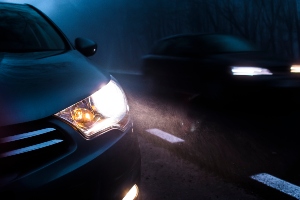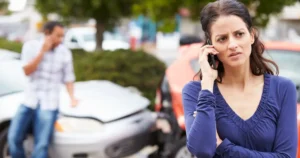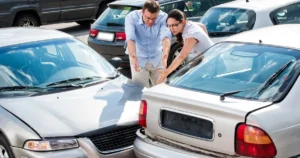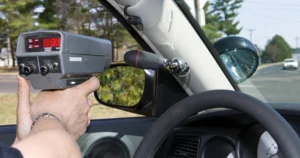
Headlights help drivers to see the road properly, especially at night. If drivers do not have their headlights on, as required by Indiana law, other vehicles, pedestrians, cyclists and stationary objects could be harder to see. Drivers with burnt-out or faulty headlights also risk not being visible to others sharing the road. Both situations increase the risk of a serious crash.
Below, our experienced South Bend car accident lawyers discuss how headlights, when used improperly, create hazardous conditions that could lead to a crash. We also discuss situations where headlights could help prevent an accident.
If you were injured in a collision due to a negligent driver not having their headlights on, we recommend discussing your situation with one of our knowledgeable attorneys. We can help you understand your potential legal options in a completely free case review.
Call our office today to request your FREE case review. (844)-678-1800
What Does Indiana Law Say About Using Vehicle Headlights?
In Indiana, a motor vehicle must have two headlights to provide light from both sides of the car. Motor vehicle headlights need to be seen from 500 feet away when turned on.
It is also required to have lamps that illuminate the rear registration plate with white lights. Your registration plate must be legible from up to 50 feet away.
What Color Headlights Are Illegal in Indiana?
In Indiana, red, blue and green lights are prohibited on the front of a vehicle. The brake and emergency lights must be red, and the backup light needs to be white or amber.
Colorful lights are designated for emergency vehicles like police officers and ambulances. This law helps to clarify the proper types of lights on a vehicle and avoid any confusion on the road.
How Do Headlights Help Prevent Accidents?
Headlight usage helps drivers to be seen by other vehicles. Weather conditions like fog, heavy rain or snow can make visibility difficult. It also makes it harder for other drivers to see you when on the road if your lights are not on. When drivers fail to use their headlights in these scenarios, the chance of being involved in a dangerous collision increases.
If drivers must turn on their windshield wipers to see clearly, it is a sign that they must also turn on their headlights. For example, drivers may need to turn on their headlights and windshield wipers when there is heavy rain or snowfall. Drivers who practice this method can see the road clearly while being visible to other drivers.
When Should Drivers Have Their Headlights On?
Turning headlights on at the right time can help limit collisions. Down below are some of the times when drivers should turn on their headlights:
Nighttime
Drivers should have their headlights on at night. Although streetlights may help to illuminate the road, they will not help other vehicles to see your car. Additionally, streetlights still do not provide sufficient lighting, and they are not used on every type of roadway.
Sunset and Sunrise
Sunset and sunrise are other times when drivers are required to turn on their headlights. During these hours, there may often not be enough daylight outside for other vehicles to see them.
Driving on Rural Roads
High beams may be used to see further distances, such as when driving on empty roads without streetlights. However, it is important to turn your high beams off when you see other vehicles approaching. Failing to turn off your high beams in this situation could temporarily blind the oncoming driver. Most cars have these additional lights so drivers can see up to 350 to 400 feet in front of them. However, it is also worth mentioning that high beams could slow your reaction time to obstacles on the road at night.
Can I Be Liable for An Accident If My Headlights Are Damaged?
It is possible that you could be held liable if you are not using headlights properly or do not have them on. However, you cannot be automatically assigned liability as there may be other factors that contributed to or caused the crash.
If your headlights are broken, not working or damaged and you knew or should have known about the issue, you could be held liable if a crash results. Driving with a broken headlight makes it harder for your vehicle to be seen by other drivers. Drivers are required to properly maintain their vehicles, which includes fixing broken headlights immediately. Those caught driving with broken headlights could be issued a ticket even if they are not held liable for the crash.
What Reasons Do Drivers Give for Failing To Use Their Headlights?
Drivers may have a lot of reasons for ignoring the law and failing to turn on their headlights. These reasons may include:
- Well-lit roads: Some drivers may feel that streetlights provide sufficient lighting and they do not need to turn on their headlights. However, this is in violation of the law and could cause you to get ticketed.
- Illuminated instrument panels: Most modern cars have instrument panels that light up when the engine starts. This can cause some drivers to mistakenly believe that their headlights are on. While this is an error that could happen to anyone, it is your responsibility to double-check these things before you set off down the road.
- Lack of awareness: Some drivers may not notice that it is darker than usual, especially if they are driving through a tunnel or during daylight savings time. However, this is also not an acceptable reason. As a driver, you owe a duty of care to remain alert at all times.
- Headlight switch settings: The first setting on the headlight switch knob may only turn on side lights. If drivers are not aware of that, they may believe that their lights are on when it is not.
In short, drivers need to familiarize themselves with how everything works in their car, before going out on the road. This includes taking the time to see how to properly turn on their headlights. The lack of knowledge of using headlights does not get a driver off the hook if a crash results.
Can Manufacturers Become Liable for Broken Headlights?
Manufacturers could be held liable for broken headlights if there is a design flaw or the lights are defective. However, this is rare.
Call Pfeifer, Morgan & Stesiak to Schedule a Free Legal Consultation
Our attorneys are prepared to help you seek the maximum compensation for medical bills, lost wages, pain and suffering and more. There are no upfront fees. We only get paid if we successfully obtain compensation for you.
Not sure if you have a case? Speak to one of our experienced attorneys to get answers to your legal questions. We have a history of proven results, recovering millions in compensation for our clients.
We are here to help. (574) 444-0741.













